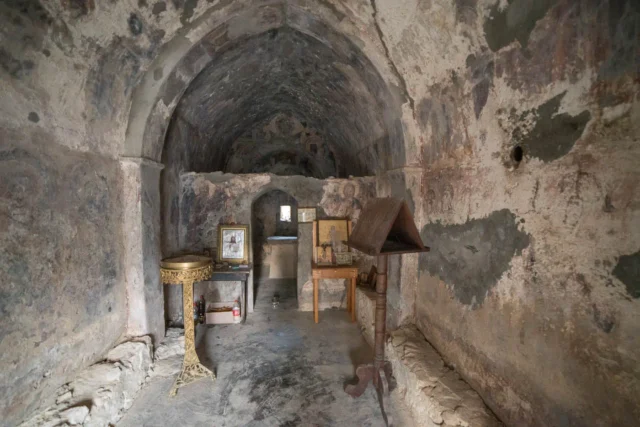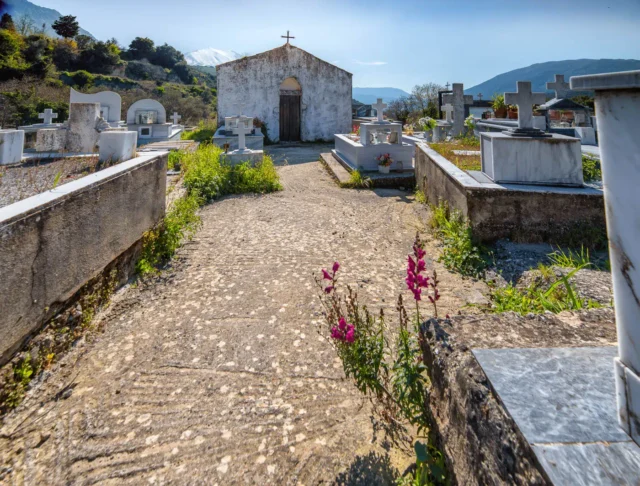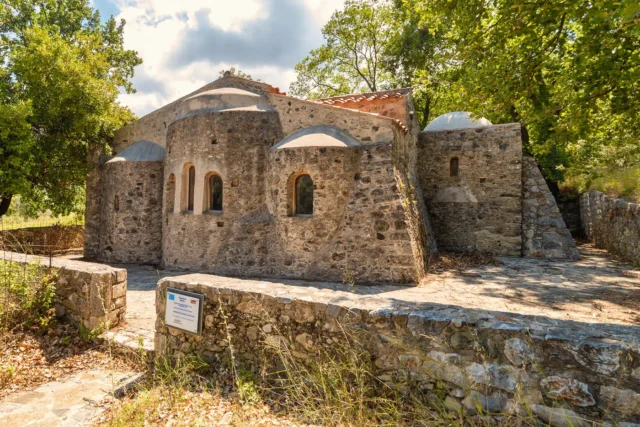
Ancient Syvritos: A Lost City of Amari, Crete
Construction Period:
- 12th century BC (Late Minoan III period)
Location:
- On and around the hill of Thronos Kefala, west of the modern village of Thronos in the Amari region of Rethymno, Crete.
- The city’s territory extended to the ancient port of Soulia (possibly modern Agia Galini) and encompassed areas in both Amari and Agios Vasilios provinces.
Dimensions:
- The exact dimensions of the ancient city are not explicitly mentioned in the provided text, but it is described as a significant settlement that covered a large area, including the hilltop acropolis, surrounding slopes, and the port of Soulia.
Historical Significance:
- One of the most important ancient cities in Crete, with a history spanning from the Late Minoan III period to the early Venetian era.
- First mentioned in Linear B tablets as “su-ki-ri-ta,” meaning “sweet water,” likely referring to the city’s access to fresh water sources.
- A powerful and independent city-state with its own currency, featuring depictions of Dionysus, Hermes, and Zeus.
- Controlled a significant territory, including the fertile Amari valley and the port of Soulia (today named Agia Galini), facilitating trade and economic prosperity.
- Played a crucial role in the region’s political and cultural landscape during the Minoan, Geometric, Archaic, Classical, Hellenistic, Roman, and early Byzantine periods.
- Served as the seat of the Bishop of Sybritos, who participated in the Fourth Ecumenical Council in 451 AD.
Current Status:
- The ancient city lies in ruins, with excavations uncovering remnants of the acropolis, houses with mosaic floors, a water supply network, and various artifacts such as pottery, figurines, and metal objects.
- The Archaeological Museum of Rethymno houses a collection of artifacts from Syvritos, including its unique coins.
- The site is currently under the jurisdiction of the Ephorate of Antiquities of Rethymno, responsible for its protection, preservation, and further archaeological investigation.
Ancient Syvritos: A Window into Crete’s Rich Past
The ruins of ancient Syvritos offer a fascinating glimpse into the island’s long and complex history. This once-thriving city, strategically located in the heart of Crete, played a pivotal role in the region’s development for over a millennium.
The city’s origins can be traced back to the Late Minoan III period, when it emerged as a significant settlement on the hill of Thronos Kefala. Its name, “Syvritos,” meaning “sweet water,” reflects the importance of water resources in this arid landscape.
Over the centuries, Syvritos evolved into a powerful and independent city-state, minting its own coins and controlling a vast territory that included the fertile Amari valley and the port of Soulia. The city’s strategic location and economic prosperity made it a major player in the region’s political and cultural landscape.
The archaeological remains of Syvritos, including the remnants of the acropolis, houses, and water supply network, provide valuable insights into the daily life, architecture, and urban planning of the ancient Cretans. The discovery of various artifacts, such as pottery, figurines, and metal objects, further enriches our understanding of the city’s cultural and artistic achievements.
The decline of Syvritos likely began in the late 8th century AD, possibly due to a combination of factors, including earthquakes and Arab raids. However, the city’s name lived on, and it continued to be mentioned in historical records even during the early Venetian period.
Today, the ruins of Syvritos stand as a silent testament to the city’s former glory. They offer a unique opportunity to explore the layers of history that have shaped Crete and to connect with the island’s ancient past.
Access
You can have access to the site from Thronos.


































There are no comments yet.